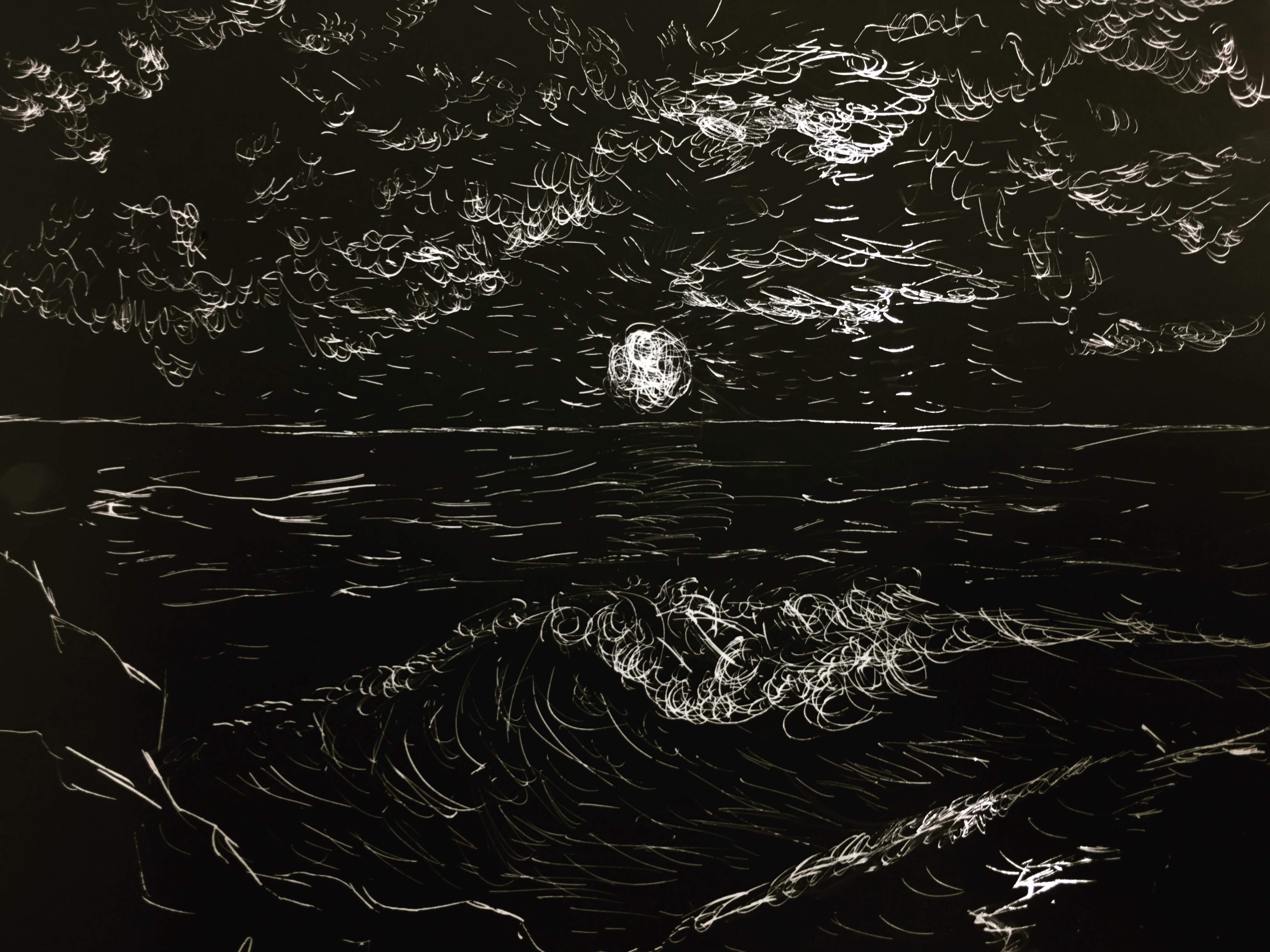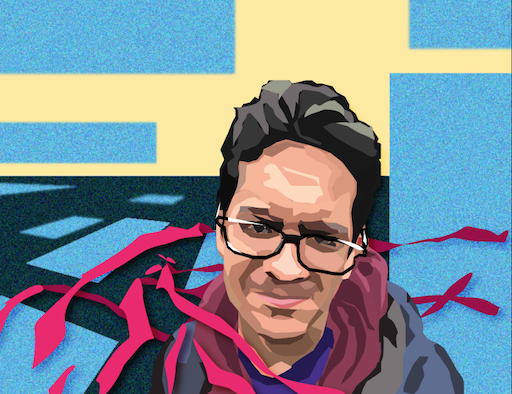An Engineer's Approach to the Arts
I grew up in New York City. I watched massive machines construct new parks, new subway stations, and new buildings, some plain and some beautiful, some utilitarian and some soaring in the sky. I watched art come and go from the Met Museum, even my own, and I watched the grass grow in Central Park. I watched it all in a movie, then saw what had changed since then in reality. I saw a dynamic city evolve over time. Point is, I grew up to love building things.
My love for art and computer science developed in parallel, starting with my first independent exposure to them in fifth grade, but both were always grounded in this fascination with evolving, dynamic structures.

**When I make art, every image, both what I’m looking at and what’s on my canvas, is an evolving, dynamic structure.
**
Take this image of a still life.  Of course, the table is a structure. One dark plane facing us and another angled back toward the ceiling.
Of course, the table is a structure. One dark plane facing us and another angled back toward the ceiling.
But let’s look at the wood grain. How would you render it? A lot of people would create loose, swirly, free-flowing lines (a perfectly good approach). My mind refuses to do that. I’d rather turn everything into a plane of color, sometimes layered and sometimes pushing into each other like steel bars. A rich, light yellowish brown underneath with streaks of pastel red, with dark brown skewering and joining it all.
The cloth is not a cloth, but triangles and bars of light and dark, alternating and angling to form this three-dimensional shape. It looks like that, and when I come to paint it on a canvas, that’s how I build it up with paint and brush strokes, in order.
This approach isn’t necessarily better, but I always found it natural for myself, and a good way to get surprising accuracy and vividness in my art, whether still life, landscape, portrait, or abstract.
Look at this wave I etched out with a stick of metal, for example. Etched metal is as structural as it gets, and flowing water is the exact opposite. But building it up from pieces gave me something I liked.
The Connection to Engineering and Computers
Yes, this could just be abstract thinking, not engineering, but isn’t that what engineering is all about? Designing complex systems from little components that come together to communicate a single vision (or function)?
In software engineering, an application can be broken into multiple pieces, steps, or functions to capture, transport, flow, or output data. Every algorithm is a bunch of steps, often from another algorithm. Every line of code is just a bunch of assembly instructions. And every assembly instruction is a series of states, and…so on.
As an in between, UX/UI design is a great example of “art” built from interactive pieces, obviously built through code.

I’ve been working on Notitia recently, and with a problem as complex as changing how people process information and retain knowledge across a company, there are a lot of pieces. We analyzed dozens of loose insights collected from our interviews by systematically turning them into individual pieces and clustering and connecting them to find patterns and associations. This model is even the inspiration for the solution to the problem. Unfortunately I can’t share the internal document, but the idea’s there!
I play guitar. I approach that as a series of licks, patterns, and sections of a song. Even in writing this article, I glued together pieces of different ideas, memories, and projects.
Whatever the situation, there are pieces (at least for me). This is how I like to go about picking them up and putting them together, in art or engineering.
